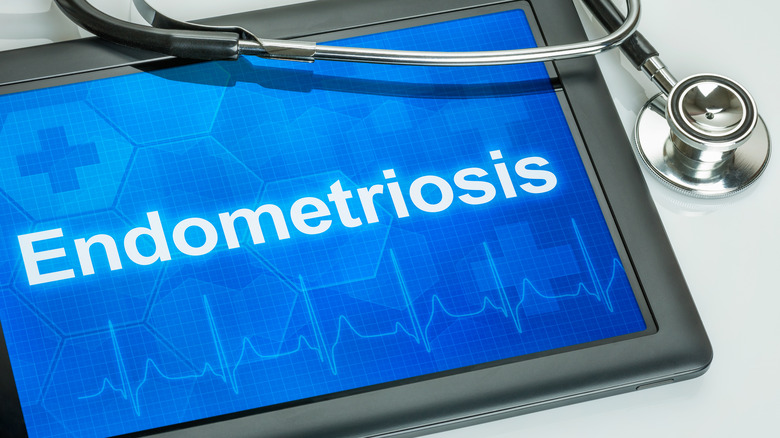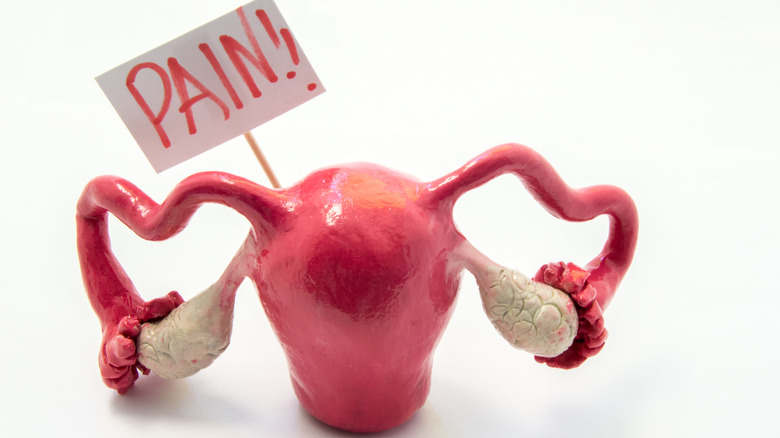When Painful Periods Can Indicate Something More Significant
Whether you are a female or have simply been around the lucky ladies in your life during menstruation, you are aware that for some, the symptoms can be severe and debilitating. Between heavy bleeding, excruciating cramps, uncontrollable mood swings and more, the American College of Obstetricians and Gynecologists (ACOG) wants you to know, that's not normal! While having your period may be uncomfortable, it should not be debilitating.
The ACOG defines heavy bleeding a few ways, the most common being as bleeding which may last more than seven days, blood clots which are about the size of a quarter or larger, or the need to change your pad or tampons every hour for a few consecutive hours, amongst other definitions. As far as pain goes, also known as dysmenorrhea, they report that over 50 percent of women who menstruate will have pain one to two days per month. While most may experience mild pain, for some it may be severe and associated with other symptoms like diarrhea, nausea, headaches, and more.
There are two types of dysmenorrhea, primary and secondary. Primary refers to cramping pains which is caused by natural fluctuations in hormones such as prostaglandins. Secondary dysmenorrhea is pain which occurs as a result of some other disease of the reproductive organs, typically endometriosis, fibroids, or adenomyosis.
Painful periods can be a sign of endometriosis
Endometriosis may be the most common cause of painful periods. Endometriosis is a condition in which the tissue that makes up the lining of the uterus, the endometrium, is found in areas outside of the uterus (via Healthline). This abnormal growth of tissue can be found in the nearby ovaries, bowels, throughout the abdominal cavity and at times, even near the lungs. It is believed that endometriosis affects up to ten percent of women.
Typical symptoms of endometriosis can include, painful menstrual cycles, heavy blood flow, infertility, pain during bowel movements, urination, or even painful sex (via ACOG). Surprisingly, some women may experience no symptoms, and diagnosis of endometriosis can be frustrating and take years. While a pelvic exam and ultrasound may be useful to rule out other conditions like ovarian cysts, endometriosis can really only be diagnosed by laparoscopy, a minimally invasive surgical procedure that involves inserting a device called a laparoscope into the abdomen so an OBGYN can get a better look at your abdominal and pelvic organs.
Treatment for endometriosis depends on the severity of the disease but can be managed with medication, surgery, or a combination of both.
Or a sign of fibroids or adenomyosism, too
If endometriosis is not to blame for your pain and cramping, fibroids or adenomyosis might be. Uterine fibroids are benign growths of muscle tissue of the uterus and can occur within the uterus or on its outer surface, according to ACOG. In addition to dysmenorrhea, symptoms of uterine fibroids include irregular vaginal bleeding, anemia, painful intercourse, constipation, abdominal fullness, infertility, and more. Unlike with endometriosis, uterine fibroids can be diagnosed with several different tests such as ultrasound, hysteroscopy, hysterosalpingography, and more. In this case, medication and surgery can also be used to treat the condition.
Adenomyosis is another gynecological condition which can cause dysmenorrhea. With this condition, the inner lining of the uterus extends through the muscular wall of the uterus (via WebMD). Recent advancements in medicine have enabled this condition to now be diagnosed through transvaginal ultrasounds or MRIs. Prior to that, women underwent hysterectomies to have their uterine tissue examined microscopically. Treatment options for this include anti-inflammatories, contraception, and even uterine artery embolism (via ACOG).
Again, while the menstrual cycle is not pleasant for anyone, if your symptoms are affecting your ability to keep up with your day-to-day activities, it may be time to see a specialist. Severe menstrual pain is not normal and should not be brushed off or ignored. Proper and timely diagnosis may help relieve symptoms in the present and preserve fertility in the future.



